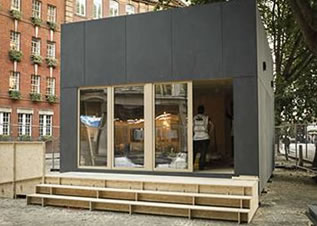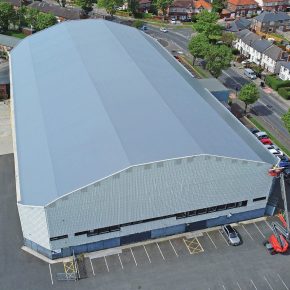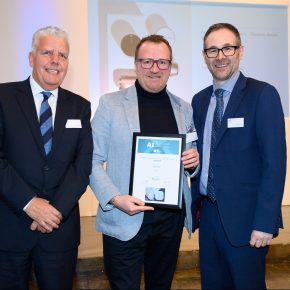
Can 3D printing end the housing crisis and even be used to colonise the moon?
Pictures of Wikihouse 4.0 courtesy of photographer Margaux Carron
As the worlds first flat-pack, affordable Wikihouse 4.0 officially opened to the public this week as part of the London Design Festival, the benefits of using 3D printing in construction are becoming more accepted amongst industry professionals, who believe that the method could be used to end the housing crisis currently being experienced across large parts of the UK.
Constructed over a period of eight days at a cost of just andpound;50,000, Wikihouse is a two-storey, two bedroom property designed with CAD software and with no real help from professional builders or architects during the design or construction.
Wikihouse is not the first home to be constructed using 3D printing; Dutch architects are currently in the process of building a full sized printed house that is waste free, eco friendly and mainly designed using a plastic based on plant oil. Whilst a Shanghai based engineering company built 10 full sized homes in 24 hours using a giant 3D printer, at a cost of less than andpound;3,000 each.
Nasa is also working with Dr Behrokh Khoshnevis of Contour Crafting, who aims to create a Martian settlement on the moon by 3D printing concrete buildings layer by layer, using a giant robotic printer and lunar rock.
The companys construction systems are being developed in order to utilise lunar regolith as a building material and create structures that include integrated radiation shielding, plumbing, electrical and sensor networks.
Contour Craftings technology can also be put into practice to construct a 2,000 square foot house with utilities for electrical and plumbing in less than 24 hours, designed for people needing emergency housing in the aftermath of a hurricane, earthquake or tsunami – a quick-fix technique which the industry desperately needs should any more natural disasters occur.
Over in the car manufacturing industry, Le Mans car designers also turned to 3D printing in order to test out their designs recently; whilst the futuristic car, Strati, was created in just 44 hours using 40 parts and direct digital manufacturing techniques.
3D printing allows anyone with access to a specialised printer to create anything they want. Although there are certain limitations to what can be printed in terms of materials and size constraints, the technology has endless possibilities for the world of architecture and design in general.
Latest news

22nd April 2024
New EJOT role will develop strategic support for UK flat roofing sector
EJOT UK has taken a major step in the expansion of its support for the flat roofing market by appointing one of its most experienced building envelope fastening specialists as its first sector-dedicated business development manager.
Posted in Articles, Building Industry News, Building Products & Structures, Building Systems, Innovations & New Products, Posts, Recruitment, Restoration & Refurbishment, Retrofit & Renovation, Roofs
22nd April 2024
Access2 Wins ADSA-Sponsored Award at AI Specification Awards
Access2 clinched the ADSA-sponsored Product Design and Innovation Award (Electronic) at the AI Specification Awards 2024 on Thursday.
Posted in Access Control & Door Entry Systems, Architectural Ironmongery, Articles, Awards, Building Associations & Institutes, Building Industry Events, Building Industry News, Building Products & Structures, Building Services, Doors, Facility Management & Building Services, Information Technology, Innovations & New Products, Retrofit & Renovation, Security and Fire Protection, Video of the Week
19th April 2024
ASSA ABLOY: Access solutions can impact sustainability performance across the full life-cycle of a building
Embedding sustainability within any organisation requires a broad, strategic perspective. Scrutiny should include the physical infrastructure itself: According to the IEA, buildings consume around 30% of global energy*. ASSA ABLOY has more…
Posted in Access Control & Door Entry Systems, Architectural Ironmongery, Articles, Building Industry News, Building Products & Structures, Building Regulations & Accreditations, Building Services, Case Studies, Doors, Facility Management & Building Services, Information Technology, Research & Materials Testing, Retrofit & Renovation, Security and Fire Protection, Sustainability & Energy Efficiency, Video of the Week
19th April 2024
British weather doesn't dampen spirit for new HMG Garden Paint
Despite one of the wettest starts to the year on record, customers are starting to plan for brighter days with HydroPro Garden Paint from HMG Paints.
Posted in Articles, Building Industry News, Building Products & Structures, Garden, Innovations & New Products, Paints, Paints, Coatings & Finishes, Restoration & Refurbishment, Retrofit & Renovation, Site Preparation, Sustainability & Energy Efficiency, Waste Management & Recycling
 Sign up:
Sign up: